Want to know how to spin your wedges?
So you want to spin it more around the green. I get asked this a lot! So here are the factors that you need to be aware of and manage if you want to hit those low pitch shots that stop after one bounce.
These are the main factors that have to be controlled.
The Golf Ball
Impact Location
Dynamic Loft
Attack Angle
Spin Loft
Friction
Speed
So let’s work our way through them.
Golf Ball
You might have realised that golf balls are priced differently. This isn’t just for the name on the box but how the golf ball is made and the material that is used on the cover. Urethane is the cover that is put on premium golf balls. A lot of companies will state their golf ball has Urethane in but it’s the amount that is used that makes the big difference. To make a golf ball more affordable some manufacturers use Surlyn amongst other covers.
Let’s use Titleist Pro V1 for example, those that have tried one might have noticed how the cover tears or shears after a while. The benefit to urethane is it allows for Friction. FRICTION is a key component to generating spin as you will find as you keep reading.
To find out what your golf ball is made of check out this list. https://golf-info-guide.com/golf-tips/equipment-choices/golf-ball-covers-chart/
Impact Location
This is horizontally and vertically across the face. Studies suggest this doesn’t directly affect spin off a perfect lie i.e. from a tee peg, off a matt. When put it into a golf course environment it does impact spin. Striking the ball higher up the face allows higher smash factor, higher launch & lower spin. Striking the ball lower on the face you can get cleaner contact (less debree between ball and club face) and lowers smash factor. If you can get lower smash factor you can swing faster, hit harder…more swing speed = More possible spin creation.
Dynamic Loft
This might take a few reads over but these are important to understand to put this in to practice. Each of these topics go hand in hand.
“Dynamic Loft is the amount of loft on the club face at impact and is measured relative to the horizon.”
Studying Trackman data tells us that to perform this shot there has to be de-lofting of the club at impact. With a 58* wedge delivering 44*- 48* loft at impact.
This DOES NOT MEAN DRAGGING THE HANDLE AHEAD OF THE BALL TAKING HUGE DIVOTS. It is common for us to have less loft delivered than what’s stamped on the wedge due to our release pattern. Unless it’s intended its hard to deliver negative shaft lean. So depending on which wedge your choosing to pitch with will have an effect on the dynamic loft you’re able to deliver. Unless you are like Seve and have magic hands.
Angle of Attack
“Angle of Attack is measured in degrees and tells us if the club head is travelling down towards or up away from the ground at impact.”
So we know that you need to deliver less loft and one of the ways to do this is to have a descending blow into the back of the ball. Believe it or not this again doesn’t mean taking huge lumps of turf. The best pitchers I’ve witnessed graze the ground. Let the club hit the ground before the ball with the bounce. Try to imagine a surf board, the front (our leading edge of a wedge) doesn’t dig into the water (turf in our case), it allows for the surfboard to glide across the water.
Spin Loft
“Spin Loft is your dynamic loft minus your angle of attack”.
We measure this in all scenarios if you come for a golf lesson or club fitting, It’s a sign of efficiency.
Optimum spin loft value for a 56* wedge is around 40-45* but once it rises above a 45-50 threshold, the ball will begin to lose friction and it will slide up the face of your wedge, producing higher launch but reducing spin.
Lets see some working out how you can get it to that value…
56* Wedge… Dynamic Loft (39 degrees) – Angle of Attack (-2 degrees) = Spin Loft (41 degrees)
THIS IS THE BIG ONE…Friction
Friction between the ball and club face is key. Wet club faces, wet golf ball, dirty grooves, dirty club face and long grass caught between ball and club face at impact are all spin KILLERS as they reduce the opportunity to create friction! The time to create spin is when we have a clean lie, its dry, the ball is clean. We’ve all hit that wedge shot from a wet lie, the club goes through perfect for us to see that ball pop up in he air and come up short, that’s the ball launching closer to our dynamic loft than our attack angle.
The best pitchers deliver less loft with a negative attack angle. Hitting a target area for spin loft is essential to creating FRICTION. The cleaner you can strike these pitches the closer the launch gets to your ATTACK ANGLE not your dynamic loft. That is how it launches LOWER…Its not us de-lofting the club dragging the handle ahead of the ball.
Let’s say we have a new wedge, new golf ball, tight clean lie we hit a 60* Wedge, dynamic loft delivery is 52*. We launch the ball at 25* and we hit down on the golf ball 7*. That ball is launching closer to the attack angle than the loft delivered at impact. It is friction that is launching that ball lower NOT us de-lofting the club to 25*.
Speed
This is where the skill, experience and bravery play a part. This shot can’t be created without speed. Speed is what allows the friction to happen. To have this in your locker is a game changer and to be practiced to feel comfortable on the course to execute this shot. Controlling your speed has a massive impact on your distance control too.
Television Trickery
Not to take anything away from the best players in the world as they can execute this shots to an amazing standard but some of the shots you will see zipping around the green on TV will be because they are pitching in to the best quality perfectly manicured receptive greens with 2,3,4% slopes. Slope makes a big difference, for those that have played Bawburgh’s 16th hole, I’m sure you will have hit a shot into that green that has spun back to the bottom of the slope. If the pins back right, sometimes spin is the enemy!!
Summary
The short game is a fantastic way to shave shots off your handicap. Even the best in the world average 12-14 greens in regulation. That leaves 4+ times they are relying on their short game to save their score. It’s important that you build up repeatable shots you can rely on to help you on the golf course. To understand this subject myself and Lewis spent time with one of the best short game coaches on the European Tour.
Having GCQuad at Peter Field Golf allows us to measure your Angle of attack, Launch angle, Spin loft, Speed and Distances. Tracking your impact numbers on a launch monitor allows us to measure if you are delivering the club correctly or if we need to address a certain area to make this action repeatable.
What gets measured gets improved!
Rob Wilkinson
PGA Professional





